In this blog post, I share my big list of the 101 most popular diets in the world that I keep updated each year.
Table of Contents
My Big List of Diets
When it comes to health and fitness, the most popular diets in the world shape how millions of people eat and live. This ultimate guide explores global weight loss plans, cultural food traditions, and trending diets.
From the Mediterranean Diet, known for its use of whole grains and olive oil, to modern approaches like Intermittent Fasting and the DASH Diet, international eating patterns reveal not only nutritional science but also lifestyle choices rooted in history and wellness trends.
Mayo Clinic, Verywell Health and numerous other experts and registered dieticians highlight the importance of healthy fats and low-fat diets for cardiovascular support and long-term adherence.
Whether you’re seeking the best diets for weight loss or simply curious about cultural nutrition patterns, this roundup provides a comprehensive look at what the world is eating.
In this post, you’ll find:
What Makes a Diet ‘Popular’?
Popularity isn’t just about how many people follow a diet. It’s measured through a blend of:
According to Harvard Health, a diet becomes truly popular when it’s both accessible and adaptable across different lifestyles.
101 Most Popular Diets in the World
#1. Mediterranean Diet
The Mediterranean Diet emphasizes whole foods like olive oil, fresh vegetables, legumes, whole grains, and fatty fish from the Mediterranean Sea. Numerous studies and U.S. News consistently rank it the best overall diet for heart health and longevity. This balanced diet lowers high cholesterol and reduces risk factors for cardiovascular disease. This infographic covers the basics. Check out my Mediterranean Diet cookbooks blog post for some awesome recipes!
#2. Keto Diet
The Keto Diet is a low-carbohydrate, high-fat eating plan that shifts the body into ketosis, where fatty acids become the primary fuel. It is one of the most trendy diets on social media, widely used for short term weight loss and blood sugar control. Nutrition experts caution that heavy reliance on red meat and animal fats may increase long-term health risks.
#3. Intermittent Fasting
Intermittent Fasting alternates between fasting and eating windows such as 16:8 or 5:2, lowering daily calorie intake while maintaining flexibility. Scientific evidence suggests it improves insulin sensitivity and supports body weight management. As one of the most popular diets in the world, it’s appealing for people wanting results without cutting entire food groups. See my blog post on Intermittent Fasting Cookbooks for meal planning ideas. Here’s a nice YouTube video that covers the basics of IF.
🎥 Video Credit: Dr. Eric Berg DC
#4. DASH Diet
The DASH Diet (Dietary Approaches to Stop Hypertension) was designed to lower high blood pressure and support overall health. It emphasizes fresh fruits, vegetables, whole grains, and limits sodium, sugar, and red meat. The Mayo Clinic highlights it as a good idea for reducing cardiovascular disease risk factors.
#5. Flexitarian Diet
The Flexitarian Diet is a plant-based diet that allows occasional animal protein or dairy products. It delivers many of the health benefits of a vegetarian diet while offering flexibility for different diets and lifestyles. Recognized as one of the most popular diets in the world, it has become a sustainable healthy diet trend. The following video provides a nice overview:
🎥 Video Credit: Comedy Kitchen
#6. Paleo Diet
The Paleo Diet is based on the Paleolithic era, promoting lean animal protein, sweet potatoes, fresh fruits, and vegetables while excluding dairy products, grains, and processed foods. It remains one of the trendy diets for people who value whole foods and clean eating. Harvard Health notes its potential health benefits but warns about eliminating entire food groups.
#7. Atkins Diet
The Atkins Diet is a phased low-carbohydrate diet plan that paved the way for modern low-carb diets. It begins with strict carb restriction, then gradually reintroduces food groups for long-term balance. Once one of the most popular diets in the world, it continues to attract followers for weight loss. See my blog post on Atkins Diet Cookbooks for structured daily diet options.
🎥 Video Credit: InstructorLive
#8. Vegan Diet
The Vegan Diet excludes all animal products, focusing on plant-based foods like legumes, whole grains, nuts, seeds, and vegetables. It supports heart health and lowers risk factors for chronic diseases. WebMD highlights the need to plan carefully to get essential nutrients.
#9. Vegetarian Diet
The Vegetarian Diet eliminates meat but allows dairy products and eggs, making it one of the most popular diets in the world across cultures. It is associated with lower cholesterol levels, improved overall health, and reduced risk of chronic diseases. This eating plan remains one of the best diets for sustainability and long-term wellness.
#10. MIND Diet
The MIND Diet (Mediterranean-DASH Intervention for Neurodegenerative Delay) combines elements of the Mediterranean and DASH diets to protect brain health. It emphasizes leafy greens, nuts, whole foods, and fatty fish while limiting sweets and animal fats. Clinical trials suggest it reduces the risk of Alzheimer’s and supports cognitive health. See my blog post on MIND Diet Cookbooks for practical recipes.
Here is a nice YouTube video from a doctor that shows how this diet can improve overall brain function.
🎥 Video Credit: Kensington Senior Living
#11. Blue Zones Diet
The Blue Zones Diet reflect the eating habits of longevity regions like Okinawa and Sardinia. They emphasize beans, fresh fruits, vegetables, and whole grains while limiting red meat and animal protein. These are among the most popular diets in the world, backed by scientific evidence linking them to reduced chronic diseases.
#12. Whole30 Diet
The Whole30 Diet is a strict 30-day elimination plan that removes sugar, alcohol, grains, legumes, and dairy products. It aims to reset eating habits, reduce cravings, and identify food sensitivities. Harvard Health notes it can be effective short term but difficult to maintain long-term as a balanced diet.
#13. Low-FODMAP Diet
The Low-FODMAP Diet was designed for people with irritable bowel syndrome and digestive discomfort. It limits fermentable carbs found in dairy products, beans, and fruit juices to reduce bloating and gut pain. As one of the most popular diets in the world for digestive health, it is recognized by registered dietitians for strong scientific evidence. See my blog post on Low-FODMAP Cookbooks to get started.
#14. Gluten-Free Diet
The Gluten-Free Diet eliminates wheat, barley, and rye, making it essential for those with celiac disease or gluten sensitivity. It relies on healthy foods like rice, quinoa, and corn for essential nutrients. Harvard Health notes that gluten-free processed products are not always a healthy diet choice.
#15. Carnivore Diet
The Carnivore Diet is an extreme low-carbohydrate diet consisting only of animal protein such as red meat, eggs, and fish. It excludes plant-based foods entirely, raising concerns about missing essential nutrients. Despite the health risks, it has become one of the most popular diets in the world among biohackers. See my blog post on Carnivore Diet Cookbooks for examples of how followers plan meals.
#16. Nordic Diet
The Nordic Diet comes from the Scandinavian region and emphasizes rye bread, root vegetables, fatty fish, and fresh fruits. It promotes whole foods, vegetable oils, and monounsaturated fats while discouraging processed foods and animal fats. Numerous studies link it to improved heart health and reduced risk of cardiovascular disease.
#17. Mayo Clinic Diet
The Mayo Clinic Diet is a balanced diet plan created by health care providers at the Mayo Clinic. It begins with a “Lose It!” phase to jumpstart weight loss, followed by a “Live It!” phase that supports portion control and healthy foods. The Mayo Clinic recommends this heart healthy diet for lowering high cholesterol and preventing chronic diseases.
#18. Whole30 Diet
The Whole30 Diet is a 30-day elimination plan that removes sugar, alcohol, grains, legumes, and dairy products to reset eating habits. After the reset, foods are reintroduced to identify sensitivities. As one of the most popular diets in the world, it appeals to people wanting a strict short-term eating plan. Harvard Health notes it’s effective short term but hard to maintain.
#19. Noom Diet
The Noom Diet uses a mobile app to combine calorie tracking with behavioral psychology. Foods are color-coded as green, yellow, or red by calorie density, helping people reduce daily calorie intake. It has become a new diet trend in the United States, especially among younger users. Its emphasis on habits makes it more sustainable than other trendy diets.
#20. Jenny Craig Diet
The Jenny Craig Diet offers prepackaged meals and one-on-one coaching to simplify calorie control. This structure makes portion sizes predictable and easier for managing weight. U.S. News ranks the Jenny Craig diet highly for accountability but notes cost can be a barrier. It remains one of the top diets for structured weight loss. You can learn more at JennyCraig.com.
#21. Nutrisystem Diet
The Nutrisystem Diet is a meal delivery plan offering calorie-controlled portions built around lean protein, fiber, and whole grains. It is praised for convenience and predictable calorie intake, making it one of the best diets for busy lifestyles. Many use it as a short-term jumpstart into a healthier daily diet.
As one of the most popular diets in the world, it continues to appeal to people seeking results without complex planning. See my blog post on Nutrisystem alternatives and meal ideas for more.
#22. Optavia Diet
The Optavia Diet relies on branded “Fuelings” such as shakes, bars, and soups plus one Lean & Green meal daily. It produces rapid weight loss through calorie restriction, but long-term sustainability is debated. Mayo Clinic notes that medical conditions may make it unsuitable for some. It remains a widely adopted new diet in the United States.
📌 Pinterest Pin Alert! I think this is a nice spot to ask that if you use Pinterest, would you mind saving this pin to one of your boards? It really helps out this blog a LOT. Thanks! 🙏
#23. Slimming World Diet
The Slimming World Diet, popular in the UK, categorizes foods into “Free Foods,” “Healthy Extras,” and “Syns.” This structure allows flexibility while keeping calorie intake manageable. As one of the most popular diets in the world, it has helped millions manage body weight through group accountability. See my blog post on Slimming World-inspired recipes for meal inspiration.
#24. Zone Diet
The Zone Diet promotes a 40-30-30 ratio of carbs, protein, and fat to stabilize insulin and hunger. Meals feature lean protein, vegetables, and healthy fats such as vegetable oils. Harvard Health calls it a moderate, balanced diet option. It continues to be one of the science-backed diets considered effective for weight loss.
#25. Dukan Diet
The Dukan Diet is a high-protein, low-carbohydrate diet divided into four phases, beginning with pure protein. It was once one of the most popular diets in the world, famous for fast early results. Critics, however, caution it can be restrictive and may increase health risks if followed long term.
#26. HCG Diet
The HCG Diet or Human Chorionic Gonadotropin Diet combines extreme calorie restriction with hormone drops or injections. Followers may lose weight quickly, but Mayo Clinic warns it lacks scientific evidence and may pose health risks. It remains a cautionary tale in diet trends despite periodic resurgence. Mayo says point blank the this diet is not safe, so stay away!
#27. CICO Diet
The CICO Diet (“Calories In, Calories Out”) is built on the principle that eating fewer calories than you burn results in weight loss. It is flexible, allowing any foods if calorie intake stays under limits. As one of the most popular diets in the world, it’s favored for simplicity but criticized for ignoring nutrition quality.
#28. IIFYM Diet
The IIFYM Diet (If It Fits Your Macros) allows any food as long as it fits within protein, carb, and fat targets. Athletes and bodybuilders favor this eating pattern for its flexibility and focus on body weight control. Verywell Fit notes it helps adherence compared to restrictive low-carb diets.
#29. OMAD Diet
The OMAD Diet (One Meal a Day) condenses eating into a single meal, fasting for the remaining 23 hours. This extreme intermittent fasting style naturally reduces calorie intake but may lack essential nutrients if not carefully planned. As one of the most popular diets in the world, it continues to trend among people seeking aggressive weight loss results.
#30. 5:2 Diet
The 5:2 Diet allows normal eating for five days and restricts calorie intake to 500–600 on two nonconsecutive days. Harvard Health calls it one of the best intermittent fasting methods. This science-backed diet remains popular in the United States and abroad.
#31. Alternate-Day Fasting
Alternate-Day Fasting alternates between very low-calorie days and normal eating days. It creates a strong calorie deficit and is being studied for metabolic syndrome benefits. As one of the most popular diets in the world, it attracts people seeking quick results, though registered dietitians warn of its difficulty to sustain.
#32. SlimFast Diet
The SlimFast Diet replaces two meals a day with shakes or bars and allows a balanced dinner. This eating pattern simplifies calorie control but may lack variety. U.S. News ranks it high for convenience, though not always for overall health.
#33. Juice Cleanse Diet
The Juice Cleanse Diet involves drinking only fruit juices and vegetable blends for short-term detox. It’s one of the most popular diets in the world but lacks essential nutrients like protein and fiber. Weight loss is largely water, not fat, making it a temporary fix. See my blog post on Juice Cleanse meal ideas.
#34. Master Cleanse
The Master Cleanse is a 7–10 day liquid fast of lemon juice, maple syrup, and cayenne pepper. Verywellfit.com warns it is unsafe and lacks essential nutrients. Despite risks, it endures as one of the most popular diets in the world due to celebrity endorsements. Kelly Plowe, MS, RD said “Anything that uses the term ‘cleanse’ is likely not the healthiest choice. The Master Cleanse is a gimmicky diet, and while you’ll likely lose weight, a lot of it will be water weight, and you’ll lose muscle, too. Plus, it’s just not enjoyable to eat this way and definitely should not be sustained.”
#35. Cabbage Soup Diet
The Cabbage Soup Diet is a 7-day crash plan centered on unlimited cabbage soup plus specific daily foods. It delivers fast but temporary weight loss, mostly from reduced calorie intake. Registered dietitians caution it is nutritionally unbalanced. I tried this diet when I was in my 30s. I never want to see another bowl of cabbage soup again!
#36. Grapefruit Diet
The Grapefruit Diet pairs meals with grapefruit under the belief it burns fat, though scientific evidence is limited. This calorie-restricted eating pattern has been around for decades. As one of the most popular diets in the world, it persists despite questions about long-term health benefits.
#37. Military Diet
The Military Diet is a three-day plan with tuna, eggs, and even ice cream, followed by four days of normal eating. Healthline notes the rapid weight loss comes from calorie restriction, not special food pairings. It remains one of the most popular diets in the United States for short-term results.
#38. Baby Food Diet
The Baby Food Diet replaces meals with small jars of baby food for portion control. It is more of a fad than a balanced diet, lacking variety and essential nutrients. Still, it resurfaces as one of the most popular diets in the world when promoted by celebrities. Is this really a thing? Yup! Medicine.net explains the diet in detail on its website. Baby food! Nom nom nom!
#39. Egg Diet
The Egg Diet emphasizes eggs at most meals, sometimes paired with vegetables or grapefruit. This low-carbohydrate diet produces short-term results but lacks nutritional balance. Registered dietitians caution that such eating patterns may increase health risks over time. Eggs are one of my go-to diet foods but I don’t want to eat them at every meal!
#40. Israeli Army Diet
The Israeli Army Diet alternates between phases of eating only apples, cheese, chicken, or salad. Healthline calls it nutritionally poor and unsafe. Despite risks, it remains known as one of the most popular diets in the world historically. Dovemed covers the principles of the diet here.
#41. Hollywood Diet
The Hollywood Diet refers to juice-based cleanses marketed for rapid slimming before events. Results come primarily from water loss, not fat reduction. Still, it remains one of the trendy diets often associated with entertainment circles in the United States. Watch out Kim Kardashian!
#42. Smoothie Diet
The Smoothie Diet replaces meals with fruit and vegetable smoothies, often adding protein powders. While it can increase fruit and vegetable intake, it is rarely a balanced diet. As one of the most popular diets in the world, it continues to trend on social media platforms like TikTok and Instagram. I blog about some nice smoothie recipies in this post: The 7-Day Smoothie Diet Weight Loss Plan.
#43. Low-Carb Diet
A Low-Carb Diet reduces carbohydrate intake while increasing protein and fat. Mayo Clinic confirms it supports body weight loss and blood sugar control. Variations include the Atkins Diet and ketogenic diet, making it one of the most science-backed diets for managing health conditions.
#44. Low-Fat Diet
The Low-Fat Diet emphasizes limiting animal fats and processed oils while increasing grains, fruits, and lean proteins. It was a leading global diet trend in the 1990s and remains relevant as a new diet approach for people with high cholesterol. As one of the most popular diets in the world, it still attracts followers despite newer balanced diet options.
#45. Gluten-Free Diet
The Gluten-Free Diet eliminates wheat, barley, and rye, essential for people with celiac disease or gluten sensitivity. It substitutes with whole foods like rice, quinoa, and corn to maintain essential nutrients. Harvard Health warns that gluten-free processed products are not always a healthy diet option.
#46. TLC Diet
The TLC Diet (Therapeutic Lifestyle Changes) was created by the National Institutes of Health to lower cholesterol and improve heart health. It emphasizes lean proteins, vegetables, whole grains, and limiting saturated fats. Registered dietitians often recommend this eating style for people with high cholesterol or risk of heart disease.
#47. South Beach Diet
The South Beach Diet focuses on lean protein, vegetables, and “good carbs” with a phased approach. Developed by cardiologist Arthur Agatston, it was designed to reduce risk of heart disease while supporting weight loss. U.S. News ranks it as a balanced plan but notes it can be restrictive early on. I lost a lot of weight on this diet in my forties and I was able to keep it off. I’ll include a link to the South Beach Diet bible that tells you exactly what to eat and when below.
- Agatston, Arthur (Author)
- English (Publication Language)
- 336 Pages – 12/29/2020 (Publication Date) – Rodale Books (Publisher)
#48. Volumetrics Diet
The Volumetrics Diet promotes satiety by focusing on foods low in calorie density, such as fruits, soups, and vegetables. As one of the most popular diets in the world, it helps people eat larger portions without exceeding calorie intake. See my blog post on Volumetrics-inspired meal planning for practical ideas. Cleveland Clinic covers some of the pros and cons of the Volumetrics Diet.
#49. Pegan Diet
The Pegan Diet blends principles of the paleo diet and vegan diet into a mostly plant-based eating pattern with some animal protein. It appeals to those seeking a new diet trend built on whole foods while avoiding processed ingredients. Registered dietitians classify it as a flexible option compared to stricter fad diets.
#50. Sirtfood Diet
The Sirtfood Diet emphasizes foods like kale, blueberries, and green tea, believed to activate sirtuin genes tied to metabolism. U.S. News notes limited scientific evidence, but its popularity grew in the United Kingdom and Mediterranean region through celebrity endorsements. This fad diet remains a global curiosity despite limited science-backed diets confirming benefits.
#51. Alkaline Diet
The Alkaline Diet promotes eating vegetables, fruits, and nuts while limiting meat and processed foods under the theory of balancing body pH. As one of the most popular diets in the world, it thrives on social media but lacks scientific evidence. See my blog post on Plant-Based Cookbooks for recipes aligned with this eating style.
#52. Blood Type Diet
The Blood Type Diet prescribes different eating styles depending on a person’s blood group, such as vegetarian for Type A or meat-heavy for Type O. Health care providers caution there is no strong scientific evidence supporting this plan. Despite criticism, it remains a well-known fad diet in the United States.
#53. Macrobiotic Diet
The Macrobiotic Diet emphasizes whole grains, beans, and vegetables, with small amounts of fish. Inspired by Japanese traditions, it promotes a balanced daily diet rooted in cultural eating styles. Healthline notes it can be healthy but restrictive if not carefully planned.
#54. Raw Food Diet
The Raw Food Diet prioritizes eating uncooked foods like fruits, vegetables, and nuts to preserve nutrients. As one of the most popular diets in the world, it attracts people looking to avoid processed foods. Registered dietitians caution that long-term adherence may lead to deficiencies without careful planning.
#55. Fruitarian Diet
The Fruitarian Diet is an extreme eating style focused almost entirely on fresh fruits, sometimes with nuts and seeds. Critics call it a fad diet because it lacks essential nutrients and protein. Despite risks, it continues to trend on social media as one of the most popular diets in the world. See my blog post on Fruitarian-style recipes for examples.
#56. Ayurvedic Diet
The Ayurvedic Diet comes from traditional Indian medicine, tailoring foods to a person’s dosha, or body type. It emphasizes whole foods, herbs, and mindful eating, often avoiding processed foods entirely. Health care providers acknowledge its cultural importance, though strong scientific evidence is limited.
#57. Ancestral Diet
The Ancestral Diet focuses on eating like pre-industrial societies with grass-fed meats, fermented foods, and seasonal vegetables. As one of the most popular diets in the world, it overlaps with paleo and clean eating styles. See my blog post on Ancestral-style eating for practical inspiration.
#58. Engine 2 Diet
The Engine 2 Diet is a plant-based eating style created by firefighter Rip Esselstyn. It avoids animal fats, promoting vegetables, beans, whole grains, and healthy foods from the Mediterranean region. U.S. News ranks it highly for reducing risk of heart disease and supporting long-term health.
📌 Pinterest Pin Take 2! If you didn’t share the Pinterest pin I showed you earlier, here’s another one if you are so inclined! Thanks in advance! 🙏
#59. Okinawan Diet
The Okinawan Diet originates from Japan’s Okinawa region, famous for its high population of centenarians. It emphasizes sweet potatoes, vegetables, and soy-based foods with minimal animal protein. This eating style is considered one of the most popular diets in the world for longevity and reduced risk of chronic diseases.
#60. GAPS Diet
The GAPS Diet (Gut and Psychology Syndrome) is designed to support digestive health conditions through broths, fermented foods, and elimination of grains and sugars. Critics call it restrictive, but some health care providers use it as a complementary plan. See my blog post on GAPS-friendly recipes for examples.
#61. Scarsdale Diet
The Scarsdale Diet is a high-protein, low-calorie fad diet from the 1970s promising rapid results. A registered dietitian would caution that its restrictive eating style lacks balance and may harm long-term health. As one of the most popular diets in the world historically, it helped spark modern low-carb diets.
#62. Beverly Hills Diet
The Beverly Hills Diet became known in Hollywood for its fruit-focused combinations and unusual rules. U.S. News notes it lacks scientific evidence and may pose health risks. Still, this fad diet illustrates how entertainment trends shaped new diets in the United States.
#63. Cookie Diet
The Cookie Diet substitutes special low-calorie cookies for most meals, followed by a small dinner. As one of the most popular diets in the world, it resurfaces periodically as a fad diet for weight loss. See my blog post on Cookie Diet alternatives for background.
#64. Cambridge Diet
The Cambridge Diet, also known as the 1:1 Diet, is a very low-calorie plan using shakes, soups, and meal replacements. A registered dietitian usually supervises it due to health risks when followed long term. It remains a widely recognized fad diet in the United Kingdom.
#65. Subway Diet
The Subway Diet gained fame when “Jared” lost significant weight eating low-calorie sandwiches daily. While effective for calorie control, health care providers stress it is not a balanced diet. As one of the most popular diets in the world, it shows how fast food became tied to diet culture.
#66. Warrior Diet
The Warrior Diet encourages under-eating during the day and one large evening meal, mimicking ancient eating styles. This intermittent fasting approach can reduce calorie intake but may pose risks for certain health conditions. Healthline has a nice review and beginners guide of this diet on its website.
#67. Snake Diet
The Snake Diet promotes extended fasting with electrolyte drinks, often described as a fad diet spread through social media. As one of the most popular diets in the world online, it gained notoriety quickly. Health care providers strongly discourage this extreme eating style due to potential health risks. I don’t like snakes! Yikes!
#68. Vertical Diet
The Vertical Diet was developed for athletes, focusing heavily on red meat, rice, and easily digested foods. It aims to simplify digestion while fueling performance, though registered dietitians warn it excludes many healthy foods. Stay vertical friends.
#69. Metabolic Typing Diet
The Metabolic Typing Diet assigns diets based on an individual’s metabolism, recommending more protein or carbs depending on type. U.S. News ranks it poorly due to a lack of scientific evidence. Still, as one of the most popular diets in the world historically, it reflects how new diets can spread without validation.
#70. Adrenal Fatigue Diet
The Adrenal Fatigue Diet is promoted for stress-related health conditions, emphasizing whole foods, lean protein, and avoiding caffeine and sugar. While lacking strong clinical trials, it remains a fad diet discussed among alternative health care providers. Registered dietitians advise cautious use, ensuring calorie intake meets daily needs.
#71. Pritikin Diet
The Pritikin Diet is a low-fat, high-fiber plan emphasizing fruits, vegetables, and whole grains. Developed to reduce cholesterol and improve cardiovascular health, it remains a science-backed diet for heart health. U.S. News consistently ranks it well for lowering the risk of heart disease.
#72. Ornish Diet
The Ornish Diet is an ultra-low-fat vegetarian diet created by Dr. Dean Ornish. It focuses on whole foods, plant-based meals, and very limited animal products. Clinical trials suggest it can reverse some risk factors for cardiovascular disease.
#73. Whole-Food Plant-Based Diet
The Whole-Food Plant-Based Diet eliminates processed foods and emphasizes vegetables, fruits, whole grains, and legumes. It is considered one of the most popular diets in the world for managing chronic diseases. Registered dietitians often recommend it for improved overall health.
#74. Low-Sodium Diet
The Low-Sodium Diet is prescribed for people with high blood pressure or other health conditions. It limits processed foods and added salt, relying on fresh vegetables, lean proteins, and whole grains. American Heart Association highlights it as a proven eating style for reducing hypertension.
#75. Low-Glycemic Index Diet
The Low-Glycemic Index Diet focuses on foods that cause slower rises in blood sugar, such as whole grains, legumes, and vegetables. As one of the most popular diets in the world, it is particularly useful for people with diabetes or metabolic syndrome. Research shows it supports body weight management and overall health. Here’a a handy infographic that covers the basics.
#76. Portfolio Diet
Next on my list of the most popular diets in the world is the Portfolio Diet. This diet was designed to lower cholesterol levels by combining specific foods such as oats, nuts, soy protein, and plant sterols. Mayo Clinic notes its benefits for people with high cholesterol and risk of heart disease. It remains one of the most science-backed diets for cardiovascular health.
#77. Lectin-Free Diet
The Lectin-Free Diet eliminates foods high in lectins, such as beans, legumes, and certain grains, based on the theory that lectins cause inflammation. It is considered a fad diet with limited scientific evidence. As one of the most popular diets in the world on social media, it has attracted both interest and skepticism.
#78. Autoimmune Protocol (AIP) Diet
The Autoimmune Protocol Diet is an elimination diet created for autoimmune health conditions. It removes grains, dairy, legumes, and nightshades, then reintroduces them to identify triggers. Registered dietitians note it may help some, though research remains limited.
#79. PCOS Diet
The PCOS Diet is designed to help women with polycystic ovary syndrome manage weight and hormones. It emphasizes whole foods, low-glycemic carbs, lean proteins, and healthy fats. As one of the most popular diets in the world, it is often recommended by health care providers to reduce symptoms.
#80. Diabetes Diet
The Diabetes Diet is tailored for people with type 1 or type 2 diabetes to control blood sugar. American Diabetes Association recommends balanced meals with vegetables, lean proteins, and whole grains. This science-backed diet helps manage medical conditions and improve overall health.
#81. Renal (Kidney) Diet
The Renal Diet is prescribed for people with kidney disease to limit sodium, potassium, and phosphorus. It focuses on lean proteins, controlled portions of fruit, and low-salt meals. Registered dietitians and health care providers supervise this eating style closely to protect kidney function.
#82. Gout Diet
The Gout Diet reduces purine-rich foods like red meat, organ meats, and certain seafood to lower uric acid levels. It emphasizes whole foods, low-fat dairy, fruits, and vegetables. As one of the most popular diets in the world for managing a health condition, it remains essential for people prone to gout attacks.
#83. Anti-Reflux (GERD) Diet
The Anti-Reflux Diet focuses on reducing foods that trigger heartburn, such as spicy foods, caffeine, and fatty meals. It emphasizes lean proteins, vegetables, and non-citrus fruits. Mayo Clinic highlights it as a good idea for people with this health condition.
84. Diverticulitis Diet
The Diverticulitis Diet begins with a low-fiber or liquid plan during flare-ups, then transitions to a high-fiber eating style once symptoms ease. It includes whole grains, beans, and vegetables for prevention. Registered dietitians highlight it as a science-backed diet for digestive health. If you have diverticulitis like me, I have a bunch of posts on it including this one: 31 Diverticulitis & Diverticulosis Snack Ideas.
#85. Gallbladder Diet
The Gallbladder Diet is designed for people recovering from gallbladder surgery or with gallstone risk. It emphasizes whole foods, lean proteins, and reduced animal fats. As one of the most popular diets in the world for medical conditions, it helps reduce digestive discomfort.
#86. Very-Low-Calorie Diet (VLCD)
The Very-Low-Calorie Diet restricts intake to 800 calories or fewer per day, often using meal replacements. Verywellfit.com stresses it should only be followed under health care provider supervision. While effective short term, it is considered one of the more extreme fad diets.
#87. Eco-Atkins Diet
The Eco-Atkins Diet is a plant-based version of the Atkins Diet, focusing on nuts, soy, and vegetable proteins. It combines the low-carb approach with vegetarian eating styles. Research shows it supports cholesterol control and body weight loss.
#88. Gluten-Free Casein-Free (GFCF) Diet
The Gluten-Free Casein-Free Diet eliminates gluten grains and dairy products. It is popular among parents of children with autism, though scientific evidence is limited. As one of the most popular diets in the world, it remains controversial among nutrition experts.
#89. Elimination Diet
The Elimination Diet removes common trigger foods such as dairy, gluten, soy, and eggs, then reintroduces them one at a time. It is used to identify intolerances and sensitivities under the guidance of a health care provider. Registered dietitians view it as a science-backed diet when done correctly.
#90. Fasting-Mimicking Diet (FMD)
The Fasting-Mimicking Diet provides small portions of plant-based foods over five days to simulate fasting benefits. PubMed studies suggest it improves metabolic syndrome markers and reduces risk factors for chronic diseases. As one of the most popular diets in the world, it appeals to people interested in longevity.
#91. Heart-Healthy Diet
The Heart-Healthy Diet emphasizes fruits, vegetables, whole grains, nuts, and fatty fish while limiting saturated fats and sodium. American Heart Association promotes it to reduce the risk of heart disease. This science-backed diet is one of the best overall diets recommended by health care providers.
#92. Fatty Liver Diet
The Fatty Liver Diet is recommended for people with non-alcoholic fatty liver disease (NAFLD). It emphasizes whole foods, vegetables, lean proteins, and cutting down on sugar and refined carbs. Mayo Clinic notes it improves liver health and reduces related health risks.
#93. Low-Oxalate Diet
The Low-Oxalate Diet limits high-oxalate foods like spinach, nuts, and chocolate to reduce kidney stone risk. It emphasizes low-oxalate vegetables, fruits, and adequate calcium intake. Registered dietitians recommend it for people with recurrent kidney stones.
#94. Low-Histamine Diet
The Low-Histamine Diet reduces foods like aged cheeses, wine, and fermented products to help people with histamine intolerance. It can improve symptoms such as headaches or digestive discomfort. As one of the most popular diets in the world for niche health conditions, it is often followed under health care provider supervision.
#95. Specific Carbohydrate Diet (SCD)
The Specific Carbohydrate Diet eliminates grains, most dairy, and processed foods to support digestive health. It is used for conditions like Crohn’s disease or ulcerative colitis. PubMed studies show some evidence for symptom management, though more research is needed.
#96. Clean Eating Diet
The Clean Eating Diet emphasizes whole foods and avoids processed foods, refined sugar, and artificial ingredients. It is one of the most popular diets in the world on social media for promoting a simple, balanced daily diet. Nutrition experts caution that it may become overly restrictive if taken to extremes.
#97. 1200-Calorie Diet
The 1200-Calorie Diet is a low-calorie eating style designed for weight loss under supervision. It includes vegetables, lean proteins, and controlled portions of whole grains. Health care providers recommend it only short term, as it may not provide all essential nutrients. Good Housekeeping recommends this diet for busy moms and dads.
#98. Mediterranean Low-Carb Diet
The Mediterranean Low-Carb Diet combines the Mediterranean diet’s whole foods and vegetables with reduced carbohydrates. Research shows it lowers risk factors for metabolic syndrome and supports body weight loss. As one of the most popular diets in the world, it appeals to people wanting both heart health and low-carb results.
#99. DASH Vegetarian Diet
The DASH Vegetarian Diet is a plant-based version of the DASH Diet. It emphasizes vegetables, legumes, fruits, and whole grains while reducing sodium. U.S. News notes it is one of the best overall diets for reducing high blood pressure and supporting long-term health.
#100. Flexi-Keto (Ketotarian) Diet
The Flexi-Keto Diet, also called Ketotarian, merges the ketogenic diet with plant-based eating. It emphasizes vegetables, avocado, olive oil, and small amounts of animal protein. As one of the most popular diets in the world, it attracts followers of both keto and plant-based diets.
#101. Mediterranean Pescatarian Diet
Rounding out my big list of the most popular diets in the world is the Mediterranean Pescatarian Diet. This one combines the Mediterranean region’s eating style with pescatarian principles, emphasizing fish, olive oil, vegetables, and whole grains. It supports heart health and reduces risk of heart disease while maintaining flexibility. Nutrition experts view it as one of the best overall diets for longevity and balance.
Conclusion – 101 Most Popular Diets in the World
With so many different diets, eating styles, and health-focused plans available, it’s clear there is no one-size-fits-all solution. From the Mediterranean Diet and DASH Diet — to short-term fad diets like the Cabbage Soup Diet, each approach reflects unique goals, cultural roots, or medical conditions.
The most popular diets in the world share common threads: more whole foods, fewer processed items, moderation with animal fats, and a focus on balanced nutrition. Whether your priority is lowering the risk of heart disease, managing metabolic syndrome, or simply finding a sustainable healthy diet, science-backed diets remain the most effective.
Ultimately, the best diet is one you can maintain long term. Consulting a registered dietitian or health care provider before starting a new diet is always a good idea – especially if you have a health condition. By choosing an eating plan that supports both body weight goals and overall health, you set yourself up for lasting success.
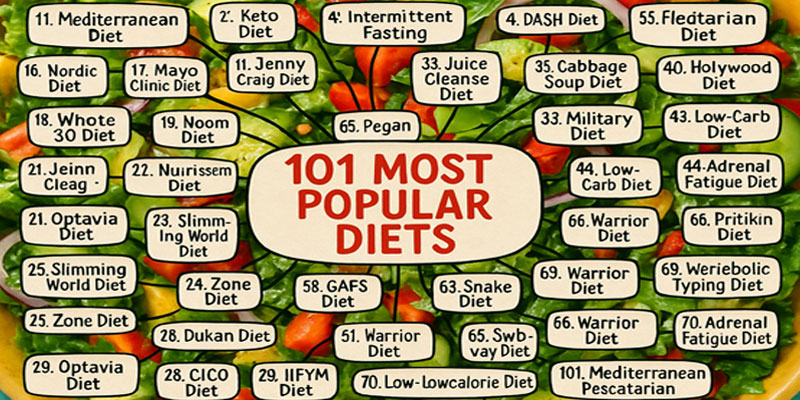

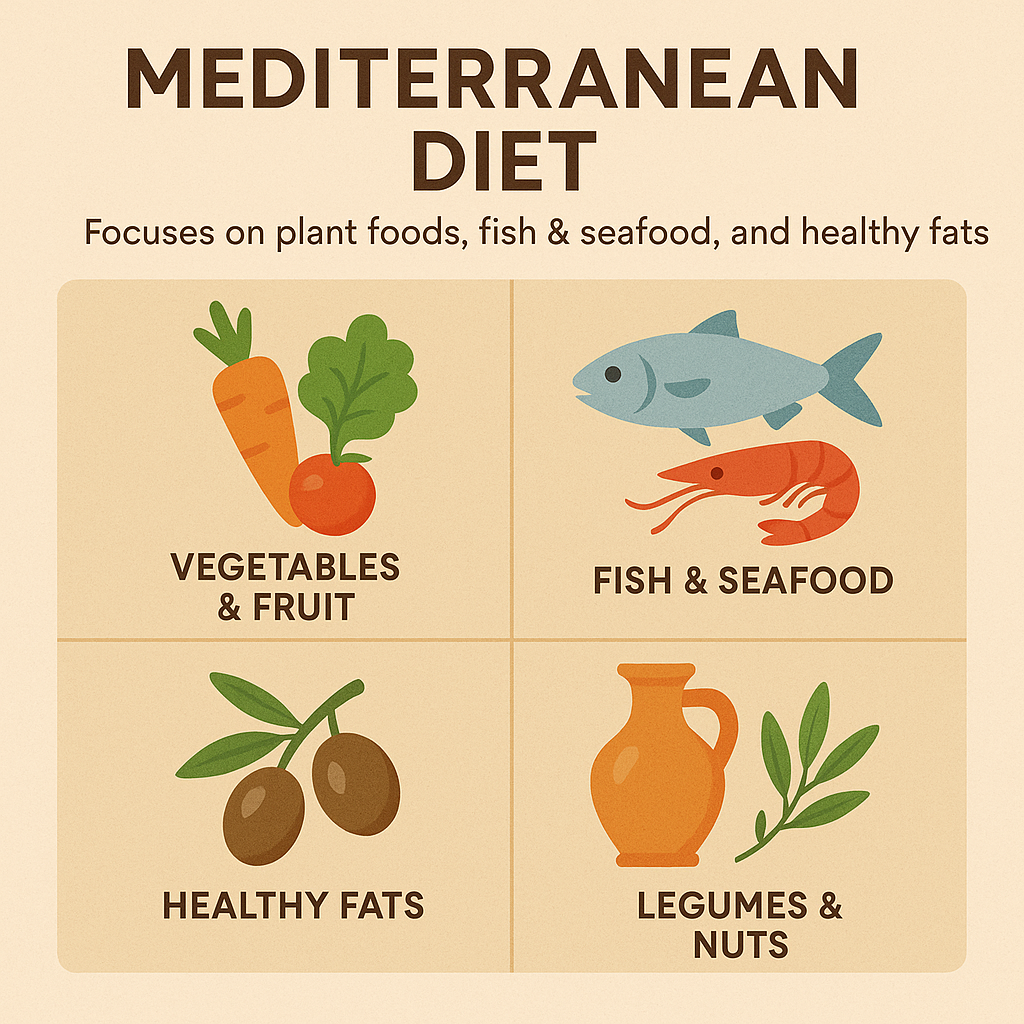
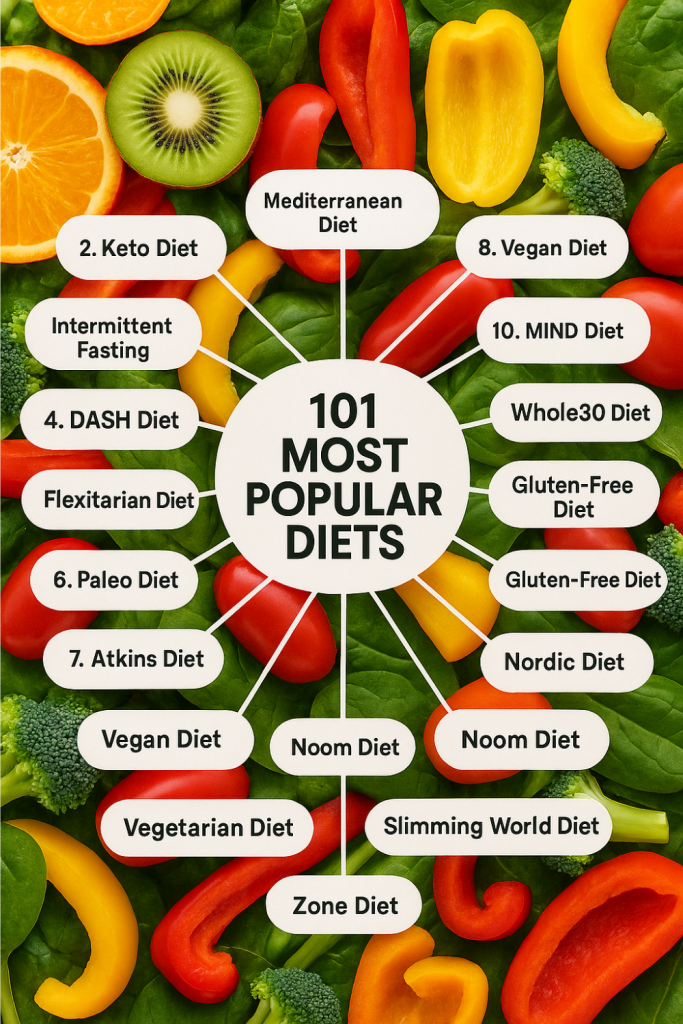

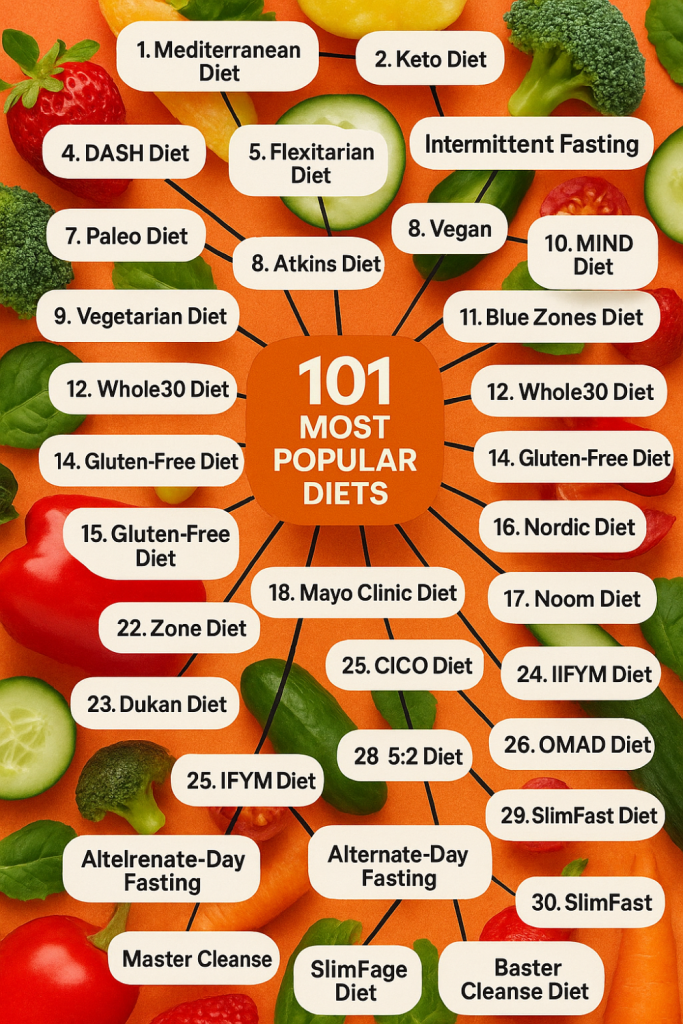

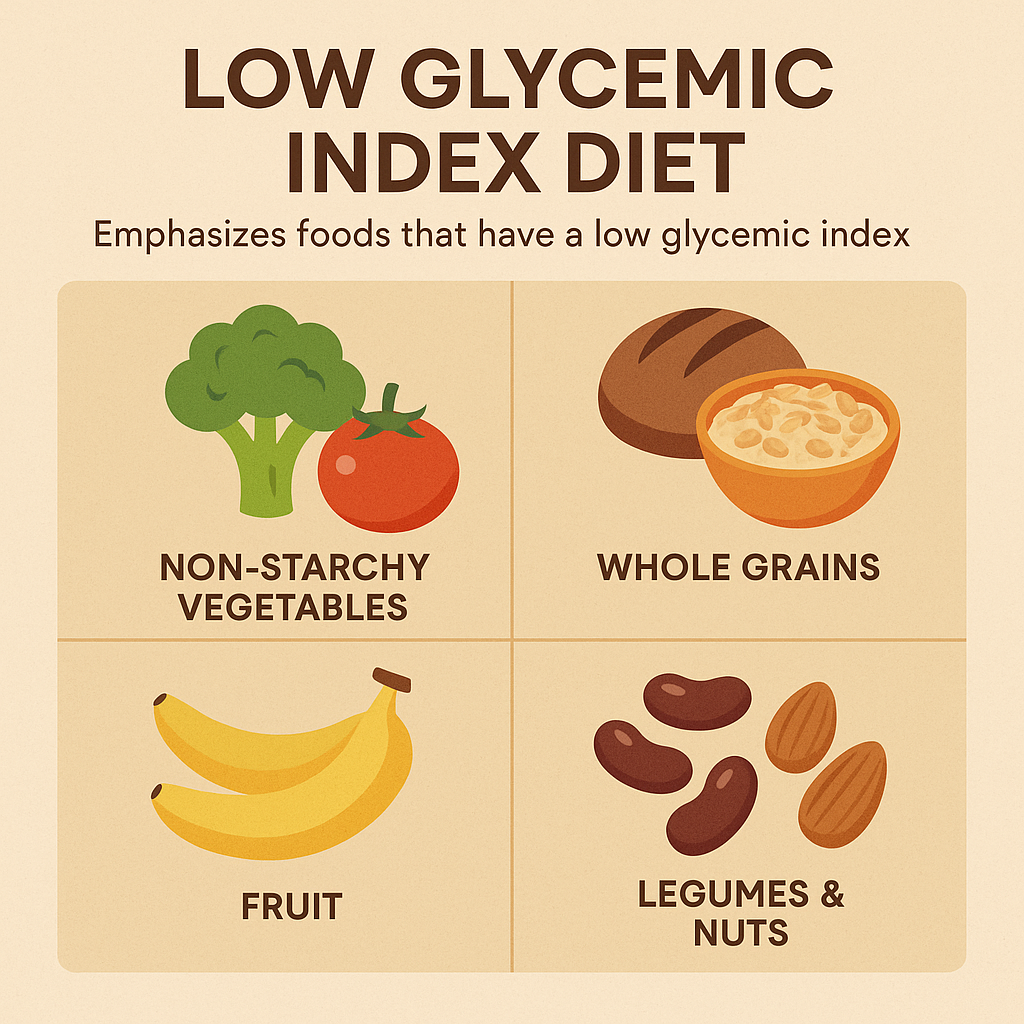
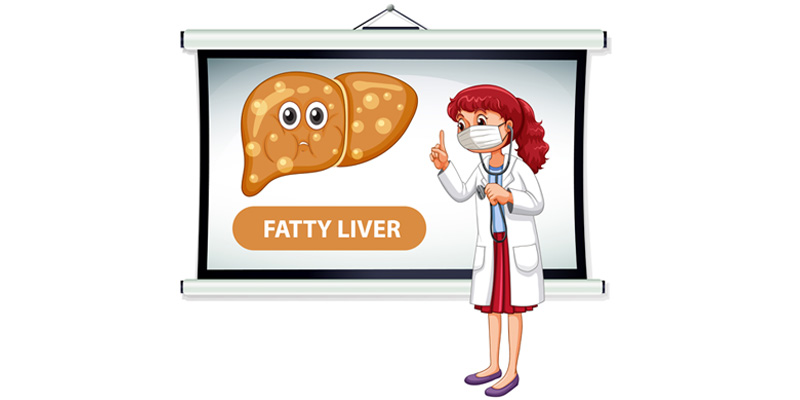


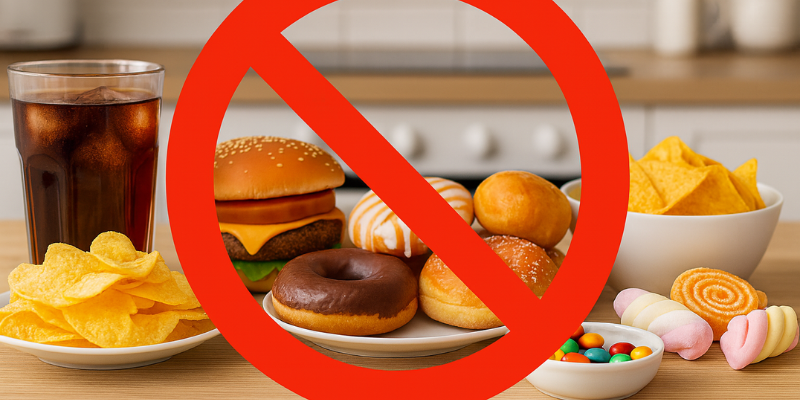

Leave a Reply